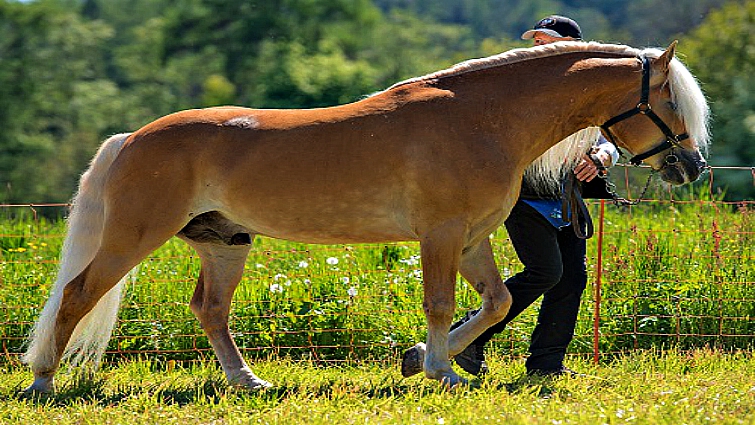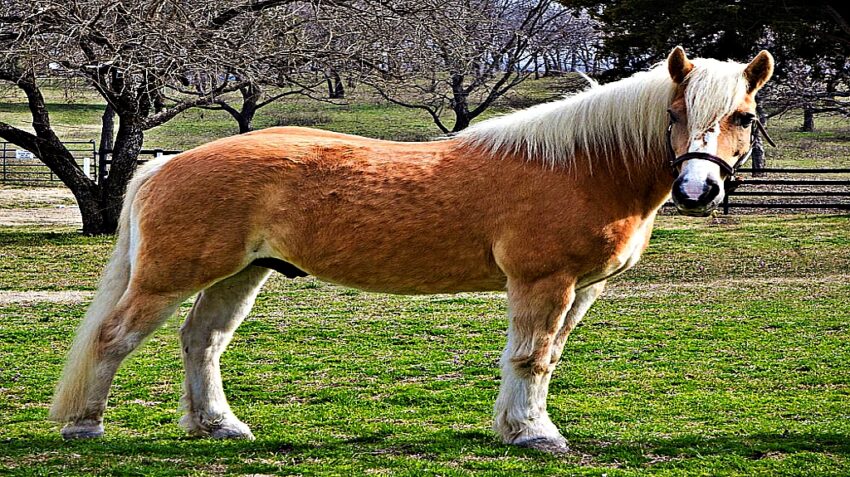Where would your horse fit on a genetic map of the entire horse world? Very close to his full brother, at a slight distance from his paternal grandmother. Bundled in a general cluster of horses of the same breed, perhaps closer to those more his “type.” And widely spaced from horses of completely different origins. While it might be fun to look at your horse’s lineage compared to that of other horses, it’s also useful. Swiss and Austrian researchers have learned that knowing the “location” of horses’ genetics—proximity to some, distance from others—on a two-dimensional map can provide important information to potentially improve breeding programs and help conservation efforts. “With new technology, we can map not only the entire genome of a horse but that of multiple horses and then place all that data on a physical map to have a novel way of seeing the way horses are genetically related to each other,” said Markus Neuditschko, PhD, of the Agroscope national agricultural research center and Swiss National Stud, in Avenches.

Neuditschko and colleagues analyzed the genomes of 531 horses of varying breeds: Then, they used a new data analysis system called a homozygosity run to determine distinct horse-to-horse similarities and differences within the population. They placed a dot on a four-quadrant “map” to represent each individual horse. Once they’d positioned all 531 dots on the map, they analyzed their relationships. They found distinct clusters of breeds, confirming the genetic similarities within a breed, Neuditschko said. They also could see how those breeds related to each other—with Arabians and Shagya Arabians clustering together and Haflingers and Bosnian Mountain horses distanced farther away. Within the breed clusters, they sometimes detected subclusters, representing breed subcategories, he said.

This might be something scientists would see if they mapped Quarter Horses, with performance horses clustering separately from halter horses, for example. In this study, they noted a distinct difference between the Italian-bred and Austrian-bred Haflingers, said Neuditschko. And finally, within the breeds and breed subcategories, they could clearly see the relationships between individual horses, with family members’ dots overlapping. The mapping gave visible clues about probable inbreeding, which could be useful to help prevent a continuing trend in those families, he said. In their study population, Austrian Haflingers and the Norikers had the lowest inbreeding rates. It also gave evidence of “pollution”—the presence of genes that showed a genetic influence from other breeds, Neuditschko said.

“Sometimes people have attempted to save breeds from small numbers by bringing in similar breeds to breed in,” he said. “But obviously these are not pure-blood animals of that breed, and that’s visible on the map. If we want to try to maintain the genetics of an endangered breed, we can look at the genetic map and rule out the individuals having too much genetic influence from a foreign breed from the conservation breeding program.” A good example of this is with the Bosnian Mountain Horse. “There are only 100 of these horses left in the world,” Neuditschko said. “We will do a better job of saving them if we can view their genetic relationships to each other.” The study, “Population Networks Associated with Runs of Homozygosity Reveal New Insights into the Breeding History of the Haflinger Horse,” was published in the Journal of Heredity.

